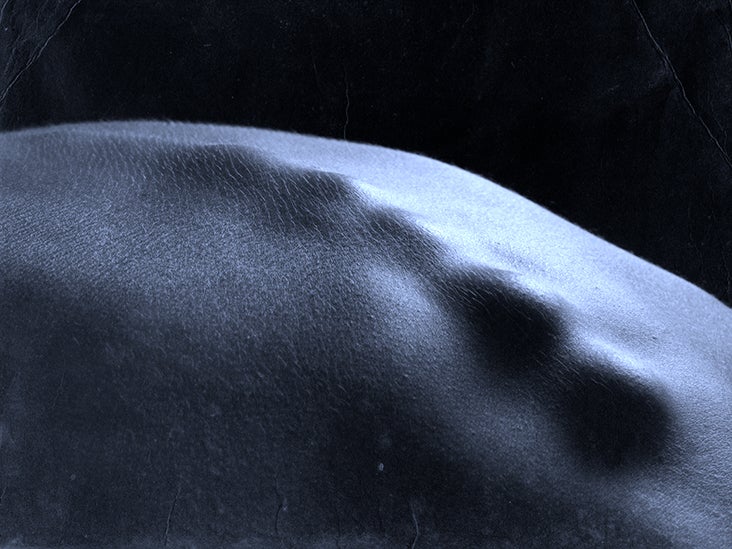Spinal gout: Symptoms, diagnosis, treatment, and more - Medical News Today

Spinal gout is a form of gout that affects areas of the spine. Gout is a type of inflammatory arthritis that can occur due to a buildup of uric acid.
If the body is unable to remove excess uric acid, urate crystals can form around joints, causing pain and inflammation. In severe cases, deposits of uric acid can also form under the skin. These deposits are known as tophi.
Without treatment, gout may spread to other areas of the body, including the spine. Spinal gout can cause back pain, weakness, loss of sensation, tingling, and cramping sensations.
This article looks at how spinal gout develops, diagnosis, treatment options, and the outlook for people with the condition.
According to a 2021 report, spinal gout is a rare form of gout that affects the spine, most commonly the lumbar spine.
The report states that spinal gout may affect 22–35% of people, but many cases may go undiagnosed due to a wide range of symptoms and a lack of awareness around the condition.
Gout is a kind of inflammatory arthritis that can occur due to elevated uric acid levels. Uric acid is a waste product, but if the body is unable to remove it effectively enough, it can build up.
Excess uric acid can form urate crystals around the joints,
Without treatment, gout
The axial skeleton consists of the skull, ribcage, and spinal column. Spinal gout
- facet joints, which connect vertebrae in the spine
- lamina, the back arch of the vertebra that connects to the spinal cord
- ligamentum flavum, the ligament that connects the laminae
- epidural space, an area within the spinal column
Symptoms of spinal gout
- back pain
- neck pain
- weakness
- numbness
- loss of bladder or bowel control
- reduced sensation in the back, legs, and buttocks
Hyperuricemia is a condition where there is excess uric acid in the body. Uric acid is a waste product from purines, which is a substance found in the body and certain foods.
In
Certain factors may increase the risk of high uric acid levels leading to clinical gout, including:
According to a
The research also theorizes that high levels of uric acid in the blood may signal an increase in cerebrospinal fluid. This may lead to obstruction areas of the foramen or spinal canal.
According to a
The article suggests signs of spinal gout may include:
- pain in the axial skeleton
- pain that radiates from the spine to the hips and legs and may also result in tingling, numbness, or weakness
- compression in the spinal cord
- high uric acid levels
A doctor may perform a physical examination to check for nodules around the joints, which could indicate gout.
A doctor may also carry out tests to check muscle strength and reflexes.
A doctor may use a blood test to measure uric acid levels. Uric acid levels above
Imaging tests, such as MRI scans, may help to show any spinal compression.
Doctors may use biopsy or surgery to check for a white, chalky mass that can indicate urate crystals.
The medications to treat spinal gout
Nonsteroidal anti-inflammatory drugs (NSAIDs), such as indomethacin or naproxen, can help treat symptoms in acute gout attacks.
NSAIDs may not be suitable for people with certain conditions, such as chronic kidney disease or heart disease. People may take colchicine as an alternative medication.
Long-term treatment may include other medications that work to prevent tophi and lower uric acid levels. These include:
- xanthine oxidase inhibitors, such as allopurinol, oxypurinol, or febuxostat
- uricosuric agents, such as sulfinpyrazone and probenecid
Other treatments for gout may include:
- losing excess weight
- limiting or avoiding alcohol, particularly beer and hard liquor
- reducing or avoiding foods high in purines, such as red meat, organ meat, or seafood
- avoiding any medication that may increase uric acid levels, such as diuretics
- stay physically active with low-impact exercises, such as walking or swimming
According to a
In one case study, a person underwent surgery to treat compression in spinal gout, which resulted in significant improvement in radiating pain.
Treatment also included taking colchicine twice a day. In a 3-year follow-up, the person remained symptom-free.
Spinal gout is a rare type of gout that affects areas of the spine.
Although gout usually affects the toes and other joints in the lower body, over time, it can spread to other parts of the body, such as the spine.
Doctors may use blood tests, imaging tests, and biopsies to diagnose spinal gout. Treatment may include medications to reduce inflammation and lower uric acid levels.
If people have any spinal cord compression, they may require surgery.
Prompt diagnosis, treatment, and lifestyle changes may help to relieve symptoms and prevent the condition from progressing.



Comments
Post a Comment